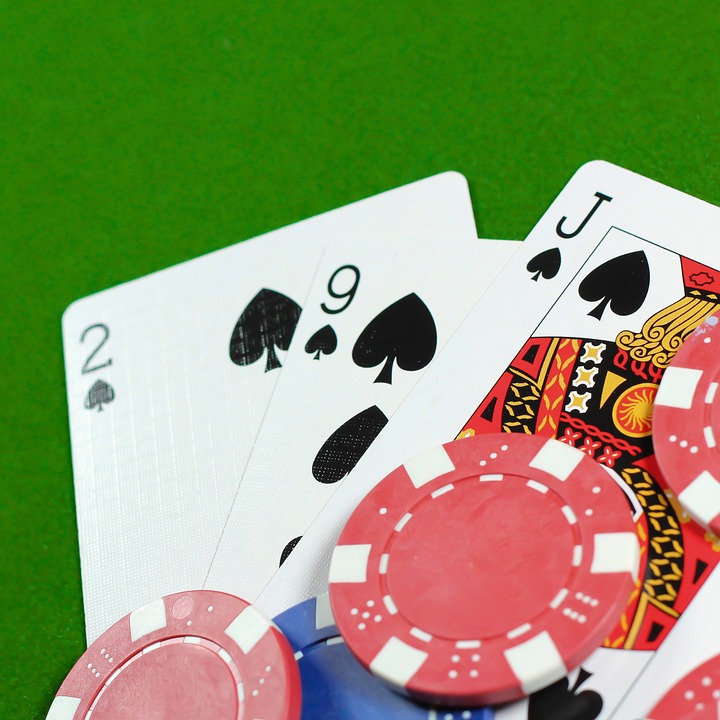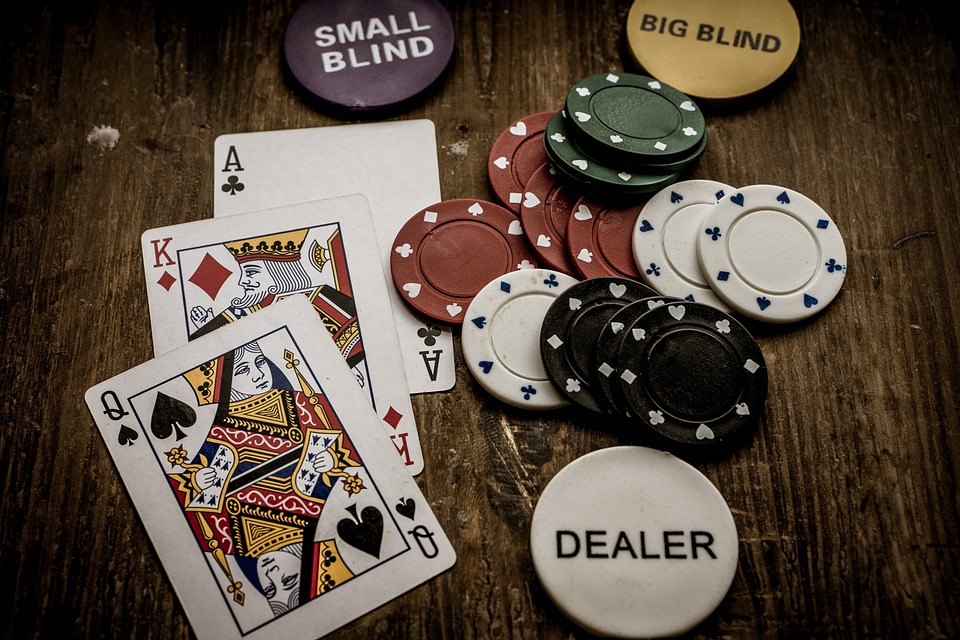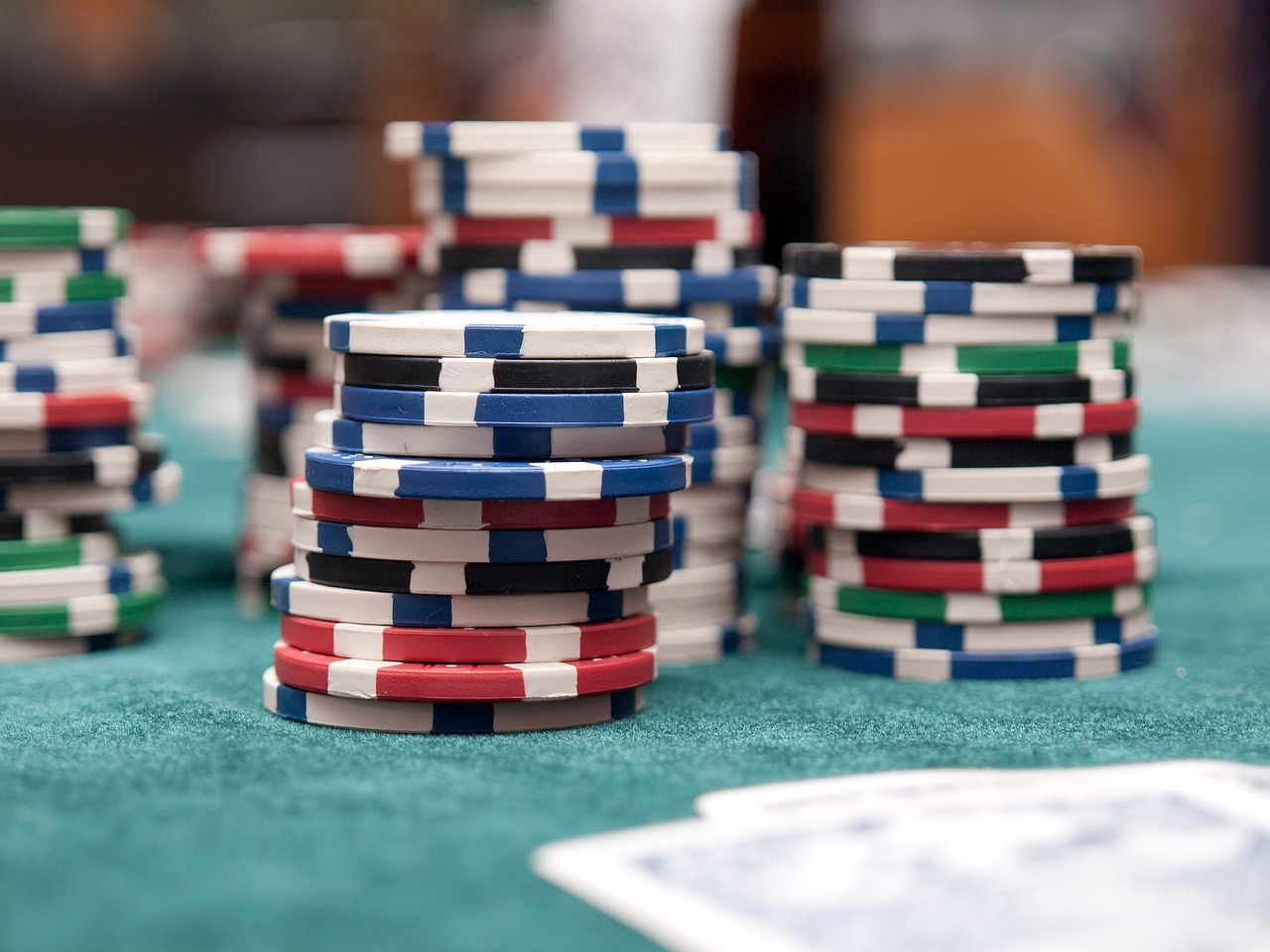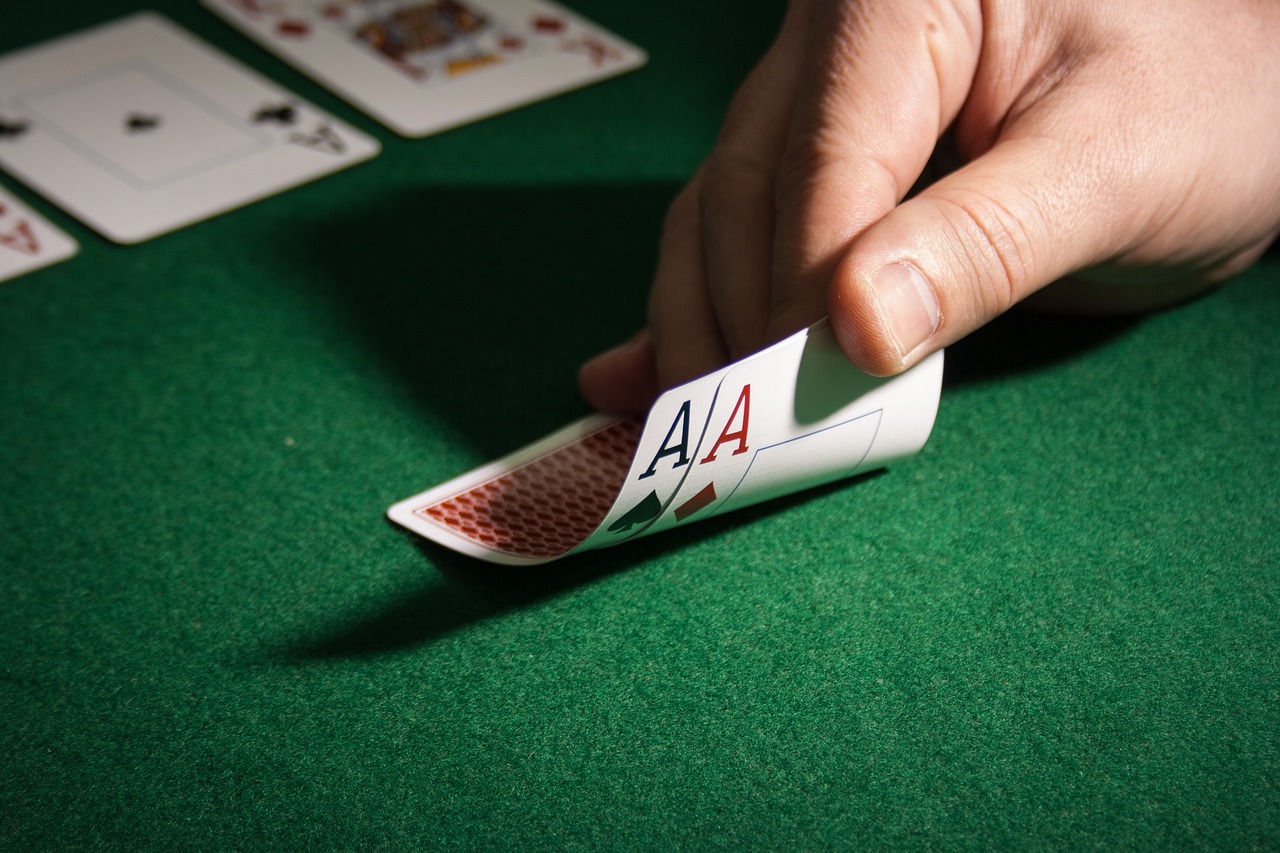The post Preventing Tilts: How Do Pro Poker Players Know They’re Too Tired to Keep Going? appeared first on Championnat-De-Poker.
]]>We’ll look at a few of the indicators that could let you know when fatigue is beginning to set in this article. We’ll also discuss ways to prevent your tiredness from taking control, resulting in unwise decisions at the poker table.

Photo by Pixabay
Why Is It Crucial to Know You’ve Reached Your Limit?
Everyone gets tired at some point. It’s only natural for the body to need rest, and even the best poker players are no different. Like professional poker players, you must always be mindful of your mind and body.
Knowing when you’ve reached your limit and are too tired to play poker can make all the difference. Playing poker requires focus, patience, and a clear head. If you’re exhausted, you’ll make irrational decisions that can prove costly.
Knowing your body language, focus, and decision-making ability might help you determine when it’s best to leave the poker table. This break can help you recharge, refocus, and return to the table with a clear mind, ready to take on the competition.
Remember, recognizing your limits is the first step towards becoming a successful and professional poker player.
What are the Signs You’re Too Tired?
As with any characteristic, each person has their own markers indicating they’re too tired to continue playing poker. However, there are some common signs everyone should be aware of. Here are some of the most common indicators of tiredness while playing poker:
You Find Great Difficulty in Understanding What Is Happening at the Table
Playing poker requires skill, focus, and concentration. As such, exhaustion can significantly impact a player’s ability to strategize effectively.
One of the most obvious signs that you’re too tired to play poker is when you find difficulty in understanding the situation at the poker table. You might miss important details, misread your opponents’ actions, or struggle to keep track of the cards on the table.
Everything’s a Blur, Literally
Playing poker for extended periods can take a toll on the body and mind. One of the more physiologic signs that you’re pushing yourself too hard is when you have blurred vision.
Everything on the table and around you starts to blend, making it challenging to focus on the game. This indicates that you’re too tired to continue playing poker. In this state, decision-making can become impaired, leading to costly mistakes.
Poker champion Daniel Negreanu knows this all too well. In 2016, he shared that he almost made a $3000 mistake after having only read “A-5 Lowball” and missing the part where it stated “Single Draw” in a poker match. This led him to play the game wrong and re-raising after the small blind raise.
Luckily, his opponent allowed him to fix his error before proceeding with the game. It’s important to remember that not everyone is given a do-over like Negreanu, so it’s best to know when your body is too tired to proceed.
You’re Easily Irritated
One of the signs that you’ve hit the wall is if you find yourself easily irritated. Simple mistakes or small comments can suddenly seem like significant offenses, and you may find yourself lashing out without meaning to.
Sometimes, you may not notice that you’re becoming more reactive than usual. Being so can have a significant impact on your gameplay and overall performance.
It can not only interrupt your concentration, but it can also make other players nervous, making it more difficult for you to predict their actions.

Photo by Pixabay
You’ve Lost Interest in the Game
Passion for the game is one of the critical characteristics of successful pro poker players. If you suddenly lose interest in playing and would rather be doing something else, it’s usually a sign that you’re close to being fatigued, if not already. Poker can feel like a chore when fatigue sets in, and your enthusiasm may wane.
Moreover, having an apathetic attitude isn’t likely to help your chances of prevailing. Feeling like the poker game is more taxing than exhilarating is a sign that you’re too tired to play.
You’re Making Rookie Mistakes
The longer you play poker, the better and wiser you become. However, if you make rookie mistakes or careless blunders during the game despite your experience, this may indicate exhaustion.
When tiredness sets in, it might impair your judgment and cause you to make snap judgments that do not consider all the relevant factors. What’s worse is if your opponents can pick up on this, they can take advantage of your weakened mental state.
How Can You Prevent Being Too Tired?
Being tired is normal, especially if you’re playing for long hours. Knowing when your body needs a break is vital to avoid costly mistakes. There are several ways to prevent fatigue from kicking in.
First and foremost, try to maintain good nutrition and assess which meals make you feel most energized. Eating well-balanced meals can help keep your concentration levels up throughout the game.
Additionally, taking regular breaks and stretching your body can also help reduce the onset of exhaustion. Even having brief recovery periods between games could help you maintain focus and avoid weariness.
Finally, obtaining enough sleep and rest is crucial for preserving the best levels of focus and alertness. Good quality sleep is just as important as any other poker strategies, tactics, and skills.

Photo by Pixabay
Conclusion
Because fatigue and exhaustion can impact your performance greatly, it’s crucial to be aware of the symptoms and know when to take a break.
Taking breaks and even deciding to stop playing for the day is critical for strengthening your poker skills and, eventually, increasing your chances of success.
Should you realize that fatigue has already started to set in, remember that you can prevent it from worsening by paying attention to your body and deciding when to take time off.
A competent poker player recognizes when their body is too weary to continue playing, and this understanding allows them to make informed decisions that can lead to long-term success.
Understanding these signs can help beginners become better players, while experienced professionals will benefit from being able to recognize when they need a break. By learning to recognize the signs of exhaustion, poker players can take steps to prevent fatigue from setting in and become more successful in their games.
Ultimately, paying attention to your body’s signals, getting enough sleep and rest, eating a balanced diet, and taking regular breaks are vital to avoid the consequences of playing when you are too tired.
With proper care, you can remain focused and engaged throughout the game, regardless if it’s a Texas Holdem game, Omaha, or classic poker.
The post Preventing Tilts: How Do Pro Poker Players Know They’re Too Tired to Keep Going? appeared first on Championnat-De-Poker.
]]>The post Poker Strategy: Balancing Your Range, Explained appeared first on Championnat-De-Poker.
]]>A question often asked by poker players is, “What is the best way to play?” Truth be told, there is no objectively correct way to play poker. It depends on many things, and you often see poker pros playing differently depending on who they’re up against or their position.
Still, a good foundation for developing your strategy is understanding the four main playstyles in poker. Of those four, only two are considered adequate: TAGs and LAGs. In this poker guide, we’ll go in-depth about these two playstyles, why they’re so good, and which one you should choose.

What do TAG and LAG mean?
TAG and LAG stand for tight-aggressive and loose-aggressive. These are two of the four primary poker playstyles. Playstyles get described as either tight or loose and either passive or aggressive.
Tight and loose refer to the number of hands someone plays; tight means they stick to only the best, while loose players are willing to play mediocre or weak hands. Passive and aggressive describe how they play said hands. Passive players prefer to check and call, while aggressive players often bet or raise.
The TAG style breakdown
Tight-aggressive means a player sticks to premium hands but isn’t afraid to bet or raise with them. This playstyle is incredibly consistent, as playing only premium hands minimizes the chance of you suffering bad beats. Their aggression allows them to consistently dominate the pot and maximize the strength of their premium hands with good value bets.
TAG players make full use of position and initiative to play aggressively, taking control of the pot whenever they can. What counts as a premium hand for TAG players is highly position-dependent, with them tightening up considerably in early position while being more willing to play draws and weaker pocket pairs from a late position.
TAG style advantages
The TAG style is incredibly well-rounded, relying less on luck than other playstyles. When executed correctly, there are very few weaknesses for others to exploit. The TAG style remains consistently profitable through most levels of play and is a great way to stay out of risky scenarios.
A tight table image also allows you to get in well-timed bets to catch your opponents off guard. The biggest strength of being a TAG, however, is the ease of learning. It’s straightforward, and while there is a world of difference between good and bad TAGs, most players practice being a TAG first since it’s easier. This also makes the TAG style suitable for multi-tabling, as there are fewer complex decisions to be made.

The LAG style breakdown
Loose-aggressive means a player isn’t afraid to play weak hands, nor are they afraid to get aggressive with them. It’s characterized by frequent bluffs and a wide range of hands that make it difficult to tell what exactly they’re holding. Some LAGs can even look like “maniacs,” players who simply do not care about their decisions and play every hand aggressively.
In reality, however, the LAG style requires careful decision-making and isn’t blindly playing lots of hands. They apply careful pressure with their actions, forcing their opponents into unfavorable situations they can capitalize on.
LAG style advantages
The LAG style can potentially be the most lucrative playstyle in poker. The ability to win the game without having a solid hand through bluffing is fantastic and allows the LAG to turn a profit at nearly every opportunity. The wide range of hands LAGs makes it difficult for opponents to pin them down and guess what they hold. This, combined with their pressure-inducing aggression, makes LAGs supremely difficult to play against.
However, all these strengths come with a considerable cost. The LAG style is the hardest playstyle to execute successfully, requiring a great deal of experience and nerves of steel. Inexperienced players trying out the LAG style will often lose a ton of hands, and even the best LAG players are more affected by chance due to the risks they take with drawing hands and the like.
The TAG style is perfect for you if…
You’re a newer player or want a safe playstyle you can easily pick up. It’s well-rounded and easy to learn, so it’s often recommended to players looking to learn the game. Being a TAG can work well for most of your poker journey, depending on how much you practice it, so it’s almost never a bad choice. The only downsides to a TAG style are that it can become monotonous after a while, and skilled LAG players can give you a run for your money.
The LAG style is perfect for you if…
You enjoy thrills and want to test your poker skills. In terms of fun, the LAG style is often considered far more engaging than the TAG style. It can get incredibly dull when all you’re doing is folding, so the LAG style could be great if you feel tired of being a TAG. It’s also a great test of skill, as you have to constantly outwit your opponents to succeed with bad hands.
You must remember, however, the inherent risk associated with being a LAG. We highly recommend avoiding this style at first if you’re a beginner. Learning to be a TAG first is often easier, and you can branch out into being a LAG when you’re ready.

See which style fits!
In conclusion, poker’s TAG and LAG playstyles are both viable and enjoyable options to provide success. When considering a poker strategy, the most important thing is to consider how much you enjoy it. While we recommend TAG for beginners, remember that everyone is different — so consider giving both a shot before settling on one. So, head to your favorite online poker site, get into the game, and give these styles a shot!
The post Poker Strategy: Balancing Your Range, Explained appeared first on Championnat-De-Poker.
]]>The post Beginner Poker Strategy: The Different Poker Hands in Order appeared first on Championnat-De-Poker.
]]>It is a common misconception that poker is primarily a game of luck. While it is true that luck plays a role in the outcome of any given hand, skill is by far the more important factor. The best poker players are those who can make intelligent decisions based on the cards they are dealt, and they are often able to win even when their hand is not particularly strong. The key to success in poker is being able to read your opponents and figure out what they will do next. With enough practice, anyone can develop this skill, regardless of how lucky they might be. This strategic depth is one of the biggest reasons to play poker, as it ensures that everyone from beginner to seasoned pro still has something new to learn. While poker’s strategic depth can seem intimidating to beginners as they don’t know where to start, you shouldn’t worry. Focusing on the basics, like poker hands in order, is a great idea, and this poker guide will help you learn just that.

Poker hands in order
In poker, cards are ranked based on their numerical or face value, and two cards with the same value but different suits are considered equally strong. From lowest to highest, cards are ranked two, three, four, five, six, seven, eight, nine, ten, jack, queen, king, and ace. However, individual card rankings are not the only thing you need to know in poker. Cards can form certain combinations too. Here is a list of all of them, from weakest first to strongest last:
High card – As the name implies, this hand contains a single top card. In a five-card hand with no other combinations, the highest-ranking card represents the strength of the hand. Ex. If you had a 4-3-2-7-King, you would have a king-high hand. If two players have the same highest card, the second-highest card is used to break the tie. This process can be repeated, and the pot is evenly split if both players have all the same cards in rank. The tiebreaker card in a hand is usually referred to as the “kicker.”
Pair – In a five-card hand, if two cards have the same rank and there are no other combinations, the hand is considered a “pair.” When compared against each other, pairs follow the standard card rankings, and if they are even, the highest non-paired card is used, and so on.
Two-pair – In a five-card hand, if there are two pairs, the hand is known as a two-pair. In the event of a tie between the highest pairs, the second-highest pair is considered, then if there is still a tie, the final unpaired card is considered.

Three-of-a-kind – In a five-card hand, if three cards have the same rank, that hand is known as a three-of-a-kind. In the event of a tie, the remaining two cards serve as the kickers.
Straight – One of the few five-card hand combinations, a straight is five cards in consecutive order. If two players have a straight, the highest card of each straight is considered. Ex. If you had 7-8-9-10-Jack, you would have a jack-high straight.
Flush – Another five-card hand combination; this time, a flush is five cards of the same suit. If two people have a flush, the tie is broken by following the standard procedure of comparing the kickers, as all suits are equally powerful.
Full house – A full house combines a three-of-a-kind and a pair. The strength of a full house is determined by the three-of-a-kind first, then the pair.
Four-of-a-kind – In a five-card hand, the four-of-a-kind consists of all four cards of the same suit and any other card as the fifth. In the event of a tie (which is only possible if the four-of-a-kind comes entirely from the community cards), the player with the highest fifth card wins.
Straight flush – A straight flush is five cards of the same suit in consecutive order, except for 10-Jack-Queen-King-Ace. In the event of a tie, the highest card in the straight flush is considered.
Royal flush – A royal flush is the strongest possible straight flush and poker hand, consisting of a 10-Jack-Queen-King-Ace all of the same suit. The pot is automatically split if two players have a royal flush, as there would be no kicker.

The first step is knowing the fundamentals
To be successful at poker, it is critical to understand the different hands and their rankings. New poker players can start by memorizing the ranking of the hands and then move on to playing online poker micro-stakes games that don’t require a financial commitment. Many resources are available to help you learn poker, so there is no reason to be worried. Start your journey today and see how far you can go!
The post Beginner Poker Strategy: The Different Poker Hands in Order appeared first on Championnat-De-Poker.
]]>The post A Beginner’s Introduction to the World Series of Poker appeared first on Championnat-De-Poker.
]]>
1. What is the World Series of Poker?
The World Series of Poker, WSOP for short, is a series of annual poker tournaments held in Paradise, Nevada. It has been sponsored by Caesars Entertainment since 2004 and is the world’s most well-known poker tournament series. It consists of 101 events, featuring the most popular poker variants but focusing mainly on Texas Holdem. The winners of each event win not just money but also the coveted WSOP bracelets.
2. The Beginning of the WSOP
The precursor to the WSOP was a 1969 event known as the Texas Gambling Reunion. Sponsored by Tom Moore and held in Reno, this tournament was won by Crandell Addington. The tournament was one of the biggest inspirations for poker player and casino owner Benny Binion. He was also inspired by the famous 1949 game between Johnny Moss and Nick Dandalos, two of the most popular poker personalities at the time. Binion arranged the games, which attracted much publicity, and went on for five months.
This idea of a high-stakes poker game with the best players stayed in Binion’s head for nearly two decades. After attending the Texas Gamblers Reunion, he decided to host his own tournament the following year. This 1970 WSOP consisted of several cash games of the different poker variants, from five-card stud to razz to Texas Holdem. The WSOP adopted a freezeout, no-limit Texas Holdem tournament format the following year.

3. The WSOP Circuit and Expansions
In 2004, Harrah’s Entertainment (now known as Caesars Entertainment) bought Binion’s Horseshoe and the rights to the WSOP. Since 2005, they have been expanding the WSOP by creating the WSOP circuit. The circuit was a series of satellite tournaments, also known as qualifiers. Players who did well in these tournaments won a spot at the Tournament of Champions, another poker tournament related to the WSOP but did not give bracelets, and instead a trophy shaped like the WSOP logo.
The WSOP continued to grow thanks to expansions. These expansions marked the first time the official WSOP, complete with bracelets, was held in other countries besides the USA. The first expansion was in Europe in 2007 and has since spread worldwide to places like Africa and Asia Pacific.
4. Present-day WSOP
The WSOP was heavily affected by the pandemic. Despite this, the WSOP was still played in 2020 and 2021, thanks to a hybrid online and physical poker tournament format. In 2022, the WSOP returned to a mostly physical format but retained some online events. The 2022 WSOP recently concluded on July 19 after starting on May 31. The winner of the main event was Espen Jorstad of Norway, becoming the first ever Norwegian to win the WSOP main event, claiming a ten million dollar prize. The 2022 WSOP nearly broke the record of WSOP main event entrants at 8663, losing only to the 2006 WSOP with 8773 at the height of the poker boom.
5. WSOP bracelets
The WSOP bracelets have a history almost as long and varied as the tournament itself. They have ornate designs and sell for a decent amount. Despite this, many poker players don’t even consider their monetary value, as they are the most famous symbol of poker excellence. Winning a bracelet is the equivalent of winning the Stanley Cup for hockey or the World Cup for football. Bracelets were not the original WSOP reward, only introduced in 1976 after the 1970 silver cup, the 1971 – 1974 trophy, and the 1975 silver plate.
It is also shocking that the bracelets were not considered as valuable as they are today. They carried little weight back in the day, and repeat winners like Doyle Brunson did not even bother to claim two of the ten bracelets he had won. However, this was not the case for everybody. Phil Hellmuth, the owner of 16 WSOP bracelets, the most in history, recognized their value from the first time he won one in 1989. He believed they were a big part of poker history and was proven right during the mid-2000 poker boom. With poker rapidly rising in popularity, nearly every player vied for the bracelets, giving them the legendary status they have today.

The official WSOP partner site
The World Series of Poker is almost a prerequisite to know for every poker player. In large tournaments, it is not only exciting to watch the top players play, but it is also educational. Studying their playstyles can help improve your game, and there is no better place to put what you learn into practice than online poker. There are many great poker sites online like GGPoker, the world’s largest poker room. Officially partnered with WSOP, GGPoker offers many benefits from satellite and fully only tournaments to free poker tracking software and head’s up displays built into the site. Sign up at GGPoker today!
The post A Beginner’s Introduction to the World Series of Poker appeared first on Championnat-De-Poker.
]]>The post Common Pre-Flop Mistakes Everyone Makes appeared first on Championnat-De-Poker.
]]>Although some see poker as a game of chance, a great deal of skill is involved. Successful players need to be able to read their opponents, make quick decisions, and stay calm under pressure. While there are many ways to play and improve at the game, one of the best is focusing on your mistakes. Identifying and correcting your mistakes is key to improving as a poker player. This poker guide will help with that by providing a list of the most common mistakes poker players make pre-flop, along with why these mistakes are bad.

Pre-flop limping
Pre-flop limping (or just “limping”) is when a player calls the big blind instead of raising when they first come into a hand. It’s generally considered to be a weak play for a few reasons. First, it gives your opponents information about your hand – if you would have raised with a strong hand, they know they can safely fold their marginal hands. Second, it builds a bigger pot when you might not have the best hand. If you’re the only one limping, you’re essentially giving free money to the raise-first player. Finally, it makes it more likely that you’ll see a flop with many other players, which increases the chances that someone will hit something and beat you. So if you’re thinking about limping pre-flop, think again – it’s one of the biggest mistakes you can make in poker.
Not 3-betting enough
A 3-bet is when you raise after someone has already raised. It’s generally done for value, to protect your hand, or as a bluff. Many players don’t 3-bet enough, especially in today’s games where the pre-flop raising ranges are widening. By not 3-betting enough, you’re missing out on value and giving your opponents too good of odds to see a flop. You should be 3-betting a wider range of hands from the late position and taking a more aggressive approach overall. If you’re unsure how to approach 3-betting, start with a smaller size and see how your opponents react. If they fold too often, you can start increasing your bet size. If they call or 4-bet too often, you may need to adjust your range. But generally, don’t be afraid to get aggressive preflop and 3-bet more often.

Overlooking position
Ignoring position is one of the biggest mistakes you can make in poker, especially pre-flop. Position refers to where you sit at the table and the order in which players act. The last player to act has an advantage because they have the most information. The earlier you act in a hand, the less information you have. The player on the button knows how everyone else has acted and can make a more informed decision. They can also use this information more effectively by bluffing or value betting. The player on the button also has the advantage of seeing how everyone plays their hand out before making a decision. This means they can make better decisions about when to fold, call, or raise. If you’re not paying attention to position, you’re at a considerable disadvantage and are more likely to make mistakes that cost you money.
Playing too tight from the blinds
When it comes to poker, the blinds are generally considered the worst position to be in. This is because you’re forced to bet before seeing any other player’s cards, and you must first act pre-flop. This puts you at a considerable disadvantage, as you don’t have any information on which to base your decisions. However, there is one silver lining – you get better odds of calling from the blinds. Your forced bet means you have to call a smaller amount than usual. So, while you shouldn’t overplay your poker hands from the blinds, you should try to defend them more often.

Where to practice poker
Poker is a game that takes practice and experience. The pre-flop is the most critical phase of the game, so you must make sure your strategy is solid. While no one can guarantee you’ll never make another mistake, arming yourself with the knowledge of these most common pre-flop mistakes will give you a better chance of avoiding them. So, what are you waiting for? Learn how to play poker like a pro by signing up today with GGPoker, the world’s largest poker room. With world-class software and support, you’ll be able to hone your game until you’re beating the best in no time.
The post Common Pre-Flop Mistakes Everyone Makes appeared first on Championnat-De-Poker.
]]>The post Poker Strategy: Should You Ever Slow Play? appeared first on Championnat-De-Poker.
]]>Because of this strategic depth, there are a lot of different schools of thought when it comes to playing poker, with no one strategy always being the best in every situation. One of the most debated poker strategy topics is whether or not to slow play. Some players swear by it, while others think it’s a terrible idea. So, which side should you believe? Let’s look at both sides of the argument and see what makes the most sense.

What is slow playing in poker, and why would you do it?
In poker, slow play is a deceptive tactic to disguise your hand’s true strength. The goal is to induce your opponents to bet more than they would if they knew the true strength of your hand, thus increasing the size of the pot. There are a few different ways to execute a slow play, but the most common is to bet less than you otherwise would on a solid hand. You can do this by checking or calling instead of betting or raising or making small bets instead of large ones. The key is to be subtle and not give too much information about your hand. If done correctly, slow play can trick your opponents and increase the number of players in the pot, but this may not always be a good idea.
The benefits of slow play
One of the most significant advantages of slow playing is that it allows you to disguise the strength of your hand. This can make your opponents underestimate you and encourage more players to join the pot. As a result, slow playing can potentially grow the size of the pot significantly. Of course, there is always the risk that your opponents will see through this tactic, but if executed properly, slow playing can be a potent tool.

The risks of slow play
While slow play can be deceptive, having more people in the pot rarely works in practice. This is why slow play is often considered a beginner’s mistake in poker. More players in the pot mean you are less likely to win, even with a solid hand pre-flop, since the other players could have strong draws like straights or flushes. Slow play rewards those drawing hands since instead of raising to ensure they cannot make it to the next round, you give them a free pass to complete their draws and win. Having a lot of players in the pot also doesn’t necessarily mean a bigger pot. Since you rely on other people betting for you, you may not get the chance to build the pot when playing with passive players.
When to use slow play
Slow play isn’t a strategy you can use most of the time, but it isn’t terrible, either. It has its niche uses, mainly when dealing with loose-aggressive poker players. Loose-aggressive players are a specific type of poker player who tends to play a lot of hands and make large bets. They are also known as “LAGs.” While they can be challenging to play against, slow play can be an effective strategy. LAGs generally want to see a lot of action, so you can force them to put more money in the pot by playing your hand slowly. You can also use slow play to bait them into making big bets that you can then call or raise. Be careful not to become predictable with your slow play and lose the pot. When used correctly, slow play can be a powerful tool for winning against loose-aggressive poker players.
When to avoid slow playing
Most of the time, slow play is not the way to go. For example, if you’re holding a hand with a lot of potential but little chance of actually improving, slow playing can give your opponents a chance to outdraw you. Similarly, if you’re up against tight players who are unlikely to make big bets, it may be better to take a more aggressive approach. In general, slow playing should only be used when you’re confident that you have the most substantial hand and that your opponents will pay you off if you give them a chance to catch up. Otherwise, it’s usually better to bet more aggressively to build a bigger pot.

Where to practice poker
Slow playing has its place in poker. But it’s essential to understand its many limitations and when not to use it. If you want to learn more about slow-playing poker hands, sign up today with GGPoker, the world’s largest poker room. It has an endless variety of online poker game formats, allowing you to find the perfect poker games for yourself!
The post Poker Strategy: Should You Ever Slow Play? appeared first on Championnat-De-Poker.
]]>